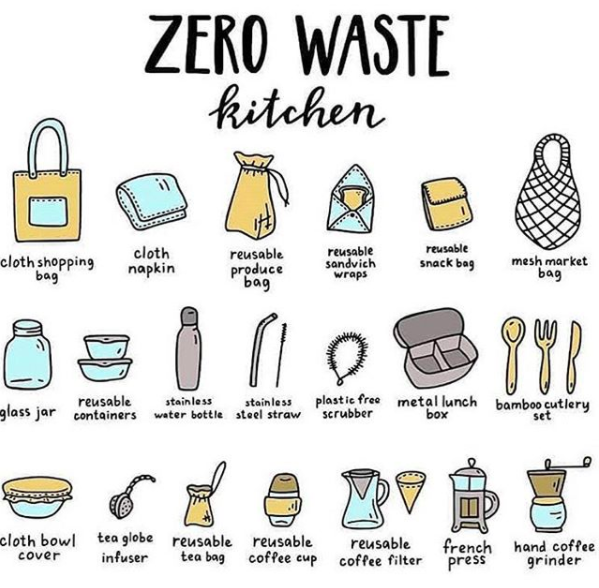A Beginner’s Guide to Sustainability: 10 Ways To Be More Sustainable At Home
Anything unfamiliar can seem daunting, especially sustainability. But, rest assured, creating an eco-friendly lifestyle is all about simplicity.
If you’re just starting out on your sustainability adventure, then I’m guessing you’ve already felt overwhelmed while doing some research. There’s so many ways to be sustainable.
But, here’s the secret to avoiding sustainability burnout: instead of trying to do everything, focus on eco-friendly changes you’re actually capable of doing.
While making your own oat milk and composting are definitely goals, you’d be surprised that making subtle, sustainable changes in your daily life have proven to make the largest impact. So, don’t feel like you have to be sustainable in every and all aspects of your life to make your eco-friendly efforts “worth it.” Every single decision you make to help the environment is crucially important!
But, where do you start? If you want to be more sustainable, care more for the Earth, and inspire others by leading by example, then start by adopting these 10 sustainability practices.
Say no to plastic and use reusables
If you haven’t invested in reusable bags, water bottles or coffee cups, then now is definitely the time. Personally, I keep about five bags in my car at all times and I have multiple reusable coffee cups. I even leave one permanently in my car so I don’t forget!
Reusables don’t start and end with bags and coffee cups. There’s so many cloth and silicon alternatives to everyday household plastics. Start by taking inventory of the plastics that you use and switching them out for a sustainable option.
Tip: if you buy cute reusables, you’ll be more inclined to use them!
Turn off water while brushing teeth
This one is super simple. You can easily be conscious about your water consumption by turning off the sink while brushing your teeth and doing the dishes. Want to go the extra mile? Take shorter showers and fix that leaky faucet!
Learn to finally recycle properly
The best way to be sustainable is to adopt as many zero-waste practices as possible. If you can’t be zero-waste, then definitely make sure the packaging of your products can be recycled.And, while you’re at it, freshen up on how to recycle properly. Hint: you have to remove labels and rinse your plastics! This can also be used as a karma yoga exercise, giving you fulfillment knowing that you are caring for the Earth, similar to caring for your plant babies.
Cut out meat + dairy
A plant-based diet is the most sustainable by far.
Every time you choose to not eat meat, you are making a difference. If everyone in the United States stopped eating meat for just one day, we would see incredible change!
If you’re a pretty heavy meat-eater, then start off by cutting out one meat meal every week. Once you’ve got the hang of that, go vegetarian for the entire day and, eventually, adopt the identity of a “week-day vegetarian.” It’s a crazy idea, but maybe you’ll even cut out meat entirely??
Shop locally as much as possible
Shopping locally is a simple way to cut down on emissions and air pollution from transportation. Rarely do people think about how far their food has traveled, but it is super important!
Buy bulk when you can
Did you know that containers and packaging make up 30 percent of our annual waste?
This is why bulk grocery stores are so important. You can easily cut out packaging on your nuts, oats, flour, seeds, beans and yummy chocolatey treats. While sometimes we have no choice other than to buy some sort of packaging, you can definitely cut out a solid chunk of plastic waste by simply refilling your kitchen staples.
Get that recycled TP
Let’s lay out the pro’s and con’s of recycled toilet paper:
PROS:
Consumes less water and keeps water clean
Preserves trees and protects habitats
Saves energy
Limits air pollution
CONS:
Some recycled toilet paper has small amounts of BPA
Keep in mind, it’s not a lot of BPA— you can have more exposure by holding a receipt— but, it’s important to know when you’re making your own decisions about sustainability.
Package-free cosmetics
This step will take you down a rabbit hole. Go to your bathroom and take inventory of your cosmetics. You’ll quickly find that everything from your shampoo and conditioner to your makeup wipes and razors are completely unsustainable.
Before you freak out, create a list of all of your plastic-packaged cosmetics. When you run out of the products, replace them with an alternative in reusable packaging, or no packaging at all.
Ride your bike or walk when you can
Again, sustainability in its simplest form. When you can, ride your bike or walk instead of driving your car to cut down on transportation emissions. That’s it! Nothin’ fancy.
Turn off your lights, AC, and appliances when you’re not using them
This may seem super obvious, but Americans spend a whopping $130 billion annually on wasted energy. I know, *cringe.*
This can easily be fixed by turning off the lights when you leave a room, unplugging appliances that aren’t in use (they still suck energy from the outlet even if they aren’t on!), and switching to LED light bulbs.
Closing thoughts…
The key to sustainability is becoming more mindful in your everyday life.
Adopting a level of consciousness where you are aware of bringing your reusable bags, turning off the lights, or rinsing your plastics before recycling comes with practice. Do whatever you need to do to remember your sustainability commitments: write notes, set alarms, change the background screen on your phone. Trust me, once you create these good habits and get in a rhythm, sustainability will become second nature.





